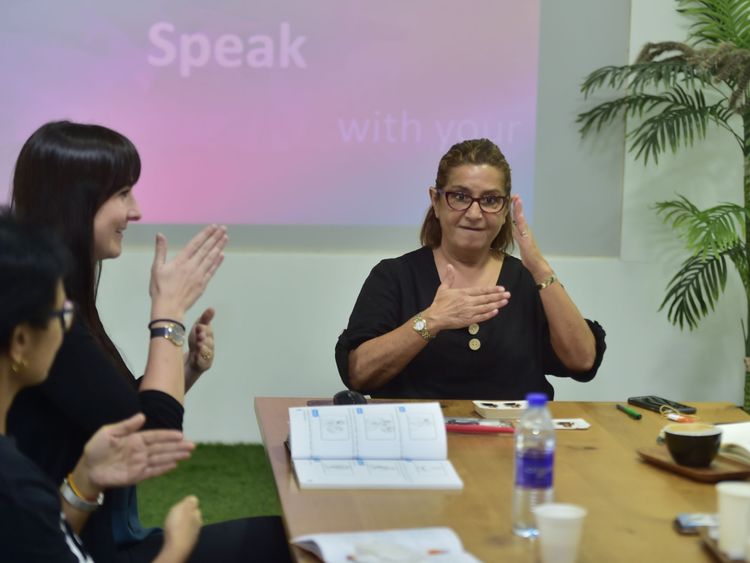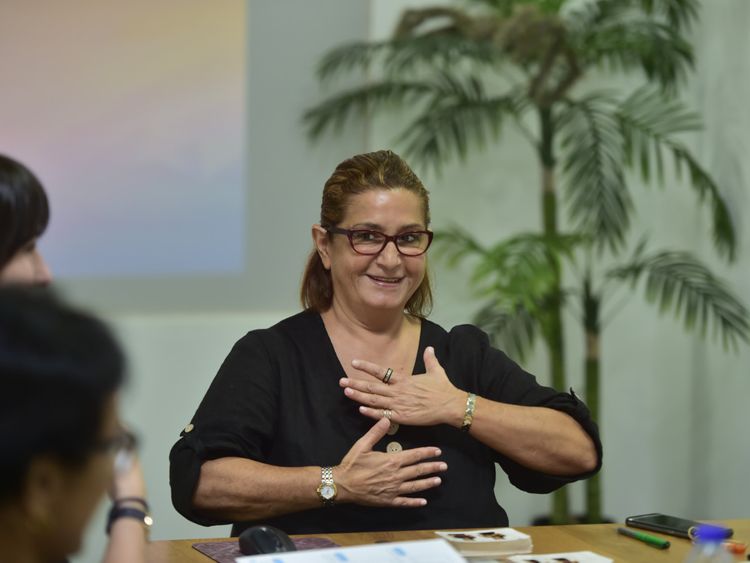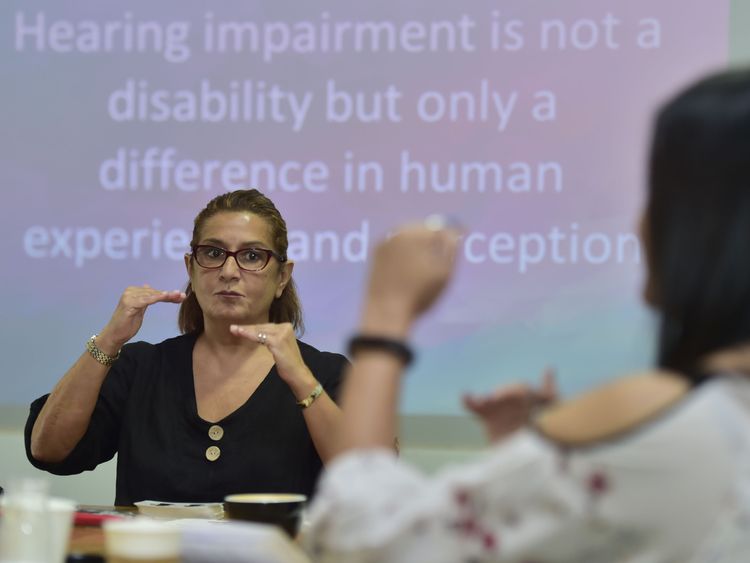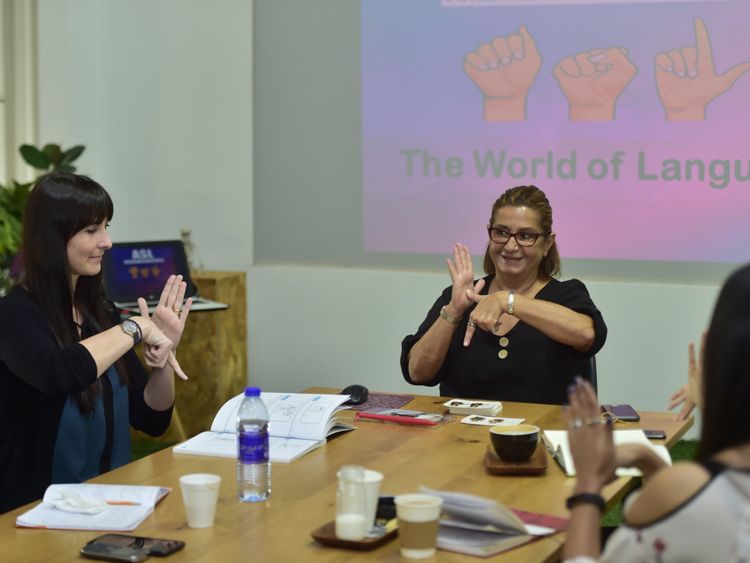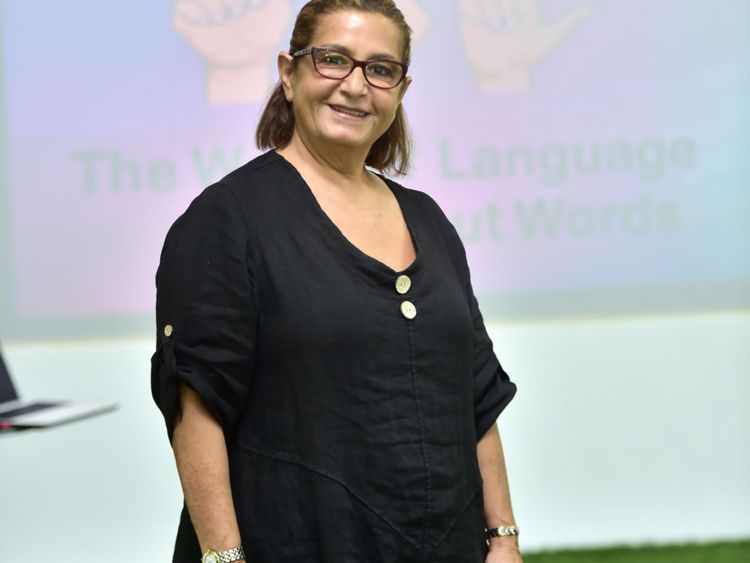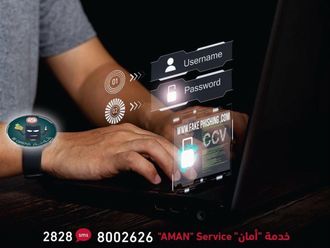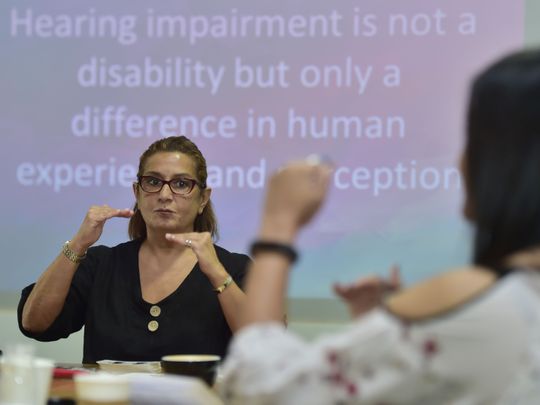
Dubai: Did you know that you should never chew gum while engaging with certain people, pat them on their shoulder from behind or tap your pen on the table when they are around?
“It’s a complete no-no as mouth movements and such other actions could be misleading if the other person happens to be hearing impaired,” says Colette Abi Rached, a certified American Sign Language (ASL) trainer and author, who is out to sensitise people on the need to break barriers while communicating with the hearing impaired.
“Hearing impairment is not a disability, but only a difference in human experience and perception. ‘Deaf and dumb’ is an insulting way to label a Deaf person. You should instead say ‘Deaf and mute’, it’s a scientifically correct and respectful way of addressing them,” she adds, insisting that the reference is spelt with a capital D, out of respect.
Colette, who has drawn up a long list of dos and don’ts (see box) when it comes to the Deaf, laments that, “Despite all the achievements we have made, the Arab world is still suffering from a lack of awareness with regards to Deaf people, they are still viewed as incomplete. Deaf individuals don’t consider themselves disabled nor should we: they have the perfect mental abilities for business and innovation. They can offer their services and expertise to be an effective workforce like anyone else.”
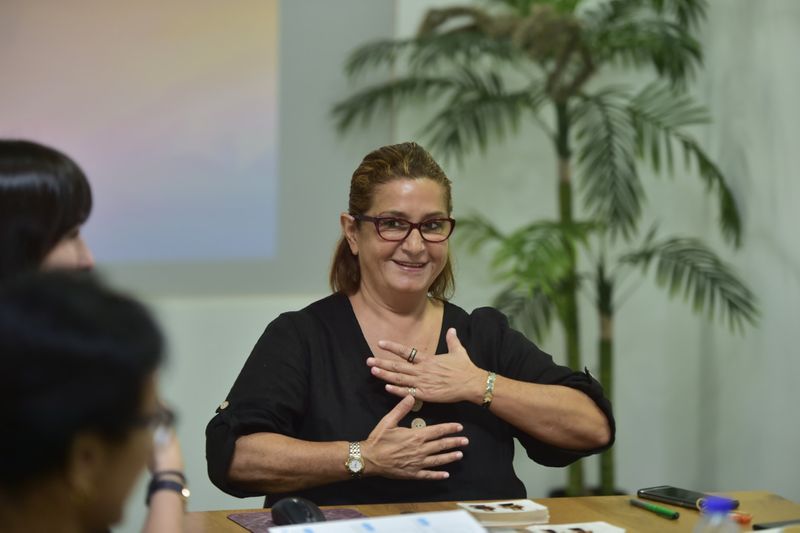
Touching moment
A former banker in the UK, Colette was motivated to learn ASL after a sight she encountered 20 years ago touched her. “I was sitting on a table in a public place and heard an unusual humming sound behind me. When I looked back, I saw a group of six-eight people signing to each other, a full conversation made in silence. It was an amazing moment that touched my heart deeply.”
A couple of years later she was holidaying in Philadelphia when she took the bus to a mall. When she got off the bus, she saw a board that said “Sign With Me.” It happened to be an ASL centre offering intensive courses. Colette didn’t think twice of enrolling herself. “I took an unpaid holiday to learn ASL, later I left my job and UK and moved to Cyprus where beside my business, I got into some voluntary teaching.”
Career option
However, it was not until she came to Dubai in 2009 that teaching ASL became a career option. “At the time my brother ran a well-known language institute where he added ASL for the first time so I could share the skill.”
Colette said ASL is to signers what spoken English is to the hearing world. Knowing ASL is a huge advantage as it opens up opportunities for jobs and promotions in professions such as nurses, doctors, police officers, business, hospitality, law, technology, government and social service.
While it is mandatory for hotels to have ASL-aware staff in all sections in the UAE, she said other sectors like banks and hospitals still don’t have such a requirement. “As a result, Deaf people don’t have any privacy. There is always someone else present to interpret what the doctor or banker has to say to them and vice-versa.”
She said besides Local Sign language, Deaf people use ASL in their travels, business and everyday life due to its practical and easy-to-use structure: Manual alphabet finger-spelled using one hand only, signs are based on pictures/images of acts using body language and most signs are logic and emotion based, They are easy to remember.”
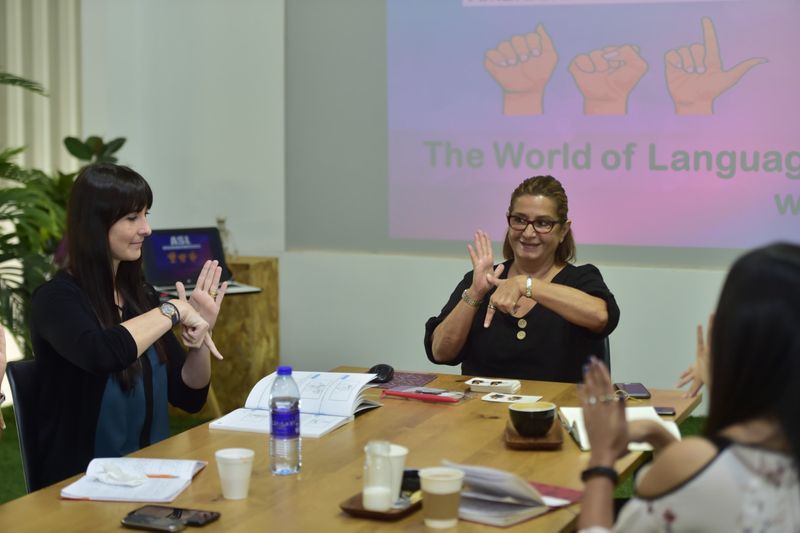
Why learn Sign Language?
Sign language is the one and only way for Deaf people to communicate with the rest of the world. It is like any other language with one exception: it is a form of communication that uses hand motions, facial expressions and body movements as a tool of communication between people.
Contrary to popular belief, the Deaf are not the only ones who communicate with sign language. Sign Language opens doors to communicate with anyone experiencing any sort of language processing challenge, including:
• Stroke victims and cerebral palsy patients
• Children with Autism and Asperger’s syndrome (as a middle step for processing language).
• Any individual with Apraxia or Down Syndrome
• The elderly
• Children too young to speak
Sign language is also used by fire fighters, police officers, medical staff, scuba divers, stock traders, airports staff etc
DO’S & DON’TS with the Deaf
• Getting close to a deaf person requires a little vulnerability on both sides. Many Deaf people are just as insecure about not being understood as you are, but most are patient and skilled at getting their point across to you.
• Deaf and dumb is an insulting way to label a Deaf person. You should instead say Deaf and mute, a scientifically correct and respectful way.
• Maintain eye contact and make your approach
• Don’t grab or poke when you walk up behind a Deaf person. Doing so isn’t necessarily offensive but can denote an emergency to them.
• Flickering the lights gets everyone’s attention. This custom is equivalent to yelling for everyone to ‘listen up’. You can also use it to draw attention when you enter the room if his or her back is turned towards you.
• To get attention, you can also wave your hand in his or her peripheral vision field. Wave casually; a frantic wave means something is wrong.
• Tapping: If you are close enough in distance to the person, a tap on the arm is a sure and preferred way to get a response.
• Pounding on a table or counter or stomping on a wooden floor are two more ways to get attention. These actions release vibrations; a Deaf person can feel them and turn to see its origination. On the other hand, if you have a habit of playing with your pen by tapping its edges on the table, tapping your fingers on the table or even tapping your feet on the floor could be misinterpreted by to mean you are seeking attention.
• Never throw objects at a Deaf person to get his or her attention. Besides being just plain rude, it is also dangerous.
• Chewing gum is a no-no in Sign. Mouth movement is an important part of signed communications.
• When you see two people are signing, don’t stare. They might be having a private conversation.
• Never initiate a conversation about a Deaf person’s hearing loss. Questioning implies that you don’t view that person as whole, but broken, incomplete, or inferior. It is a sensitive subject.


